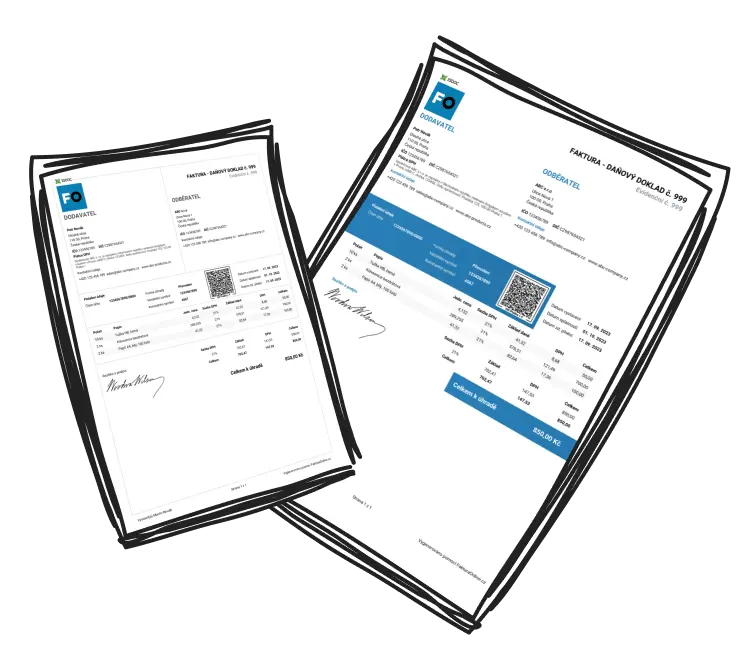For small businesses in the UK, efficiency is crucial when handling invoices. Are you certain your process is as smooth as it could be? By refining methods and embracing modern digital tools, business owners can significantly enhance their invoice management. Here's where to begin:
Adopt Digital Invoicing Systems: Switch to electronic submissions through email or a dedicated platform to cut down delays and keep order.
Clarify Vendor Expectations: Communicate clearly with suppliers about preferred formats such as PDFs and the necessary details to prevent incomplete invoices.
Automate Mundane Tasks: Utilise tools to automate invoice scanning, reminders, and uploading to save valuable time.
Centralise Invoice Collection: Have a dedicated email address like "[email protected]" for all invoices to ensure they're well-monitored and organised in one spot.

Best Practice
Set submission deadlines to ensure vendors send invoices promptly, thus avoiding last-minute scrambles.
How Can British Small Businesses Ease Invoice Management?
Making invoice handling easier doesn’t involve cutting corners—it’s about smarter management. By following these expert tips, you can minimise errors and alleviate the stress from receiving invoices:
Establish a Workflow: Devise a structured system for handling, verifying, and queuing invoices for payment.
Train Your Team: Ensure all employees comprehend the process and adhere consistently.
Provide Communication Templates: Offer suppliers pre-made invoice templates that include your specifications.
Maintain Digital Organisation: Use cloud-based systems for secure invoice archiving, accessible from anywhere.
Monitor Deadlines: Utilise calendars or apps to track invoice due dates and avoid late payments.

Example
Consider a company implementing a straightforward three-step system: vendors email invoices to a monitored account, software extracts the data, and staff verify the records—saving hours each week and ensuring timely payments.
Essential Tools for Efficient Invoice Handling
Advance your business with the right technology—what tools should you consider to improve your invoice process? Here are some solutions to simplify and economise your approach:
QuickBooks or Xero: Comprehensive accounting platforms that sync with financial records and streamline invoice management.
Bill.com: A dedicated tool offering features such as automated payment schedules and vendor interaction.
Zoho Invoice: An economical choice for small businesses to craft, follow, and oversee invoices.
OCR Tools (e.g., ABBYY): Automatically extract data from digital or scanned invoices and synchronise with accounting software.
Google Drive or Dropbox: Store and manage invoices centrally for easy access and collaboration.

Top Recommended Tool
QuickBooks is favoured for its intuitive interface, automation capabilities, and scalability, making it ideal for small enterprises.
The Significance of an Organised Invoicing System
Lacking a proper invoice system can lead to substantial financial mishaps. An efficient system streamlines processes, ensures timely and accurate invoice tracking, and minimises the risk of missing documents. This not only cuts down on late fees and enhances vendor relations, but also boosts a business's financial transparency and operational effectiveness.
Businesses using automated systems reduce processing costs by up to 60% and increase payment accuracy.

Tackling Common Invoicing Challenges
Facing issues with invoice receipt is not unusual. Here are practical solutions to common problems:
-
Duplicate Invoices:
Problem: Processing duplicates due to lack of checks.
Solution: Centralise invoicing to automatically highlight duplicates.
-
Vendor Miscommunications:
Problem: Incomplete or unclear invoice information.
Solution: Implement standard templates or clear invoicing guidelines.
-
Processing Delays:
Problem: Vendors submit late or incomplete invoices.
Solution: Use software for reminders and to prioritise urgent tasks.
-
Missing Invoice Records:
Problem: Lost invoices complicate financial reconciliation.
Solution: Employ digital archives to track and store invoices.

Inconsistent methods leave companies susceptible to errors and payment challenges—don’t underestimate the advantages of automation and clear communication!
By incorporating these methodologies and technologies, small business owners can refine their invoice receipt process, cutting down time consumption, reducing mistakes, and building stronger connections with suppliers.


